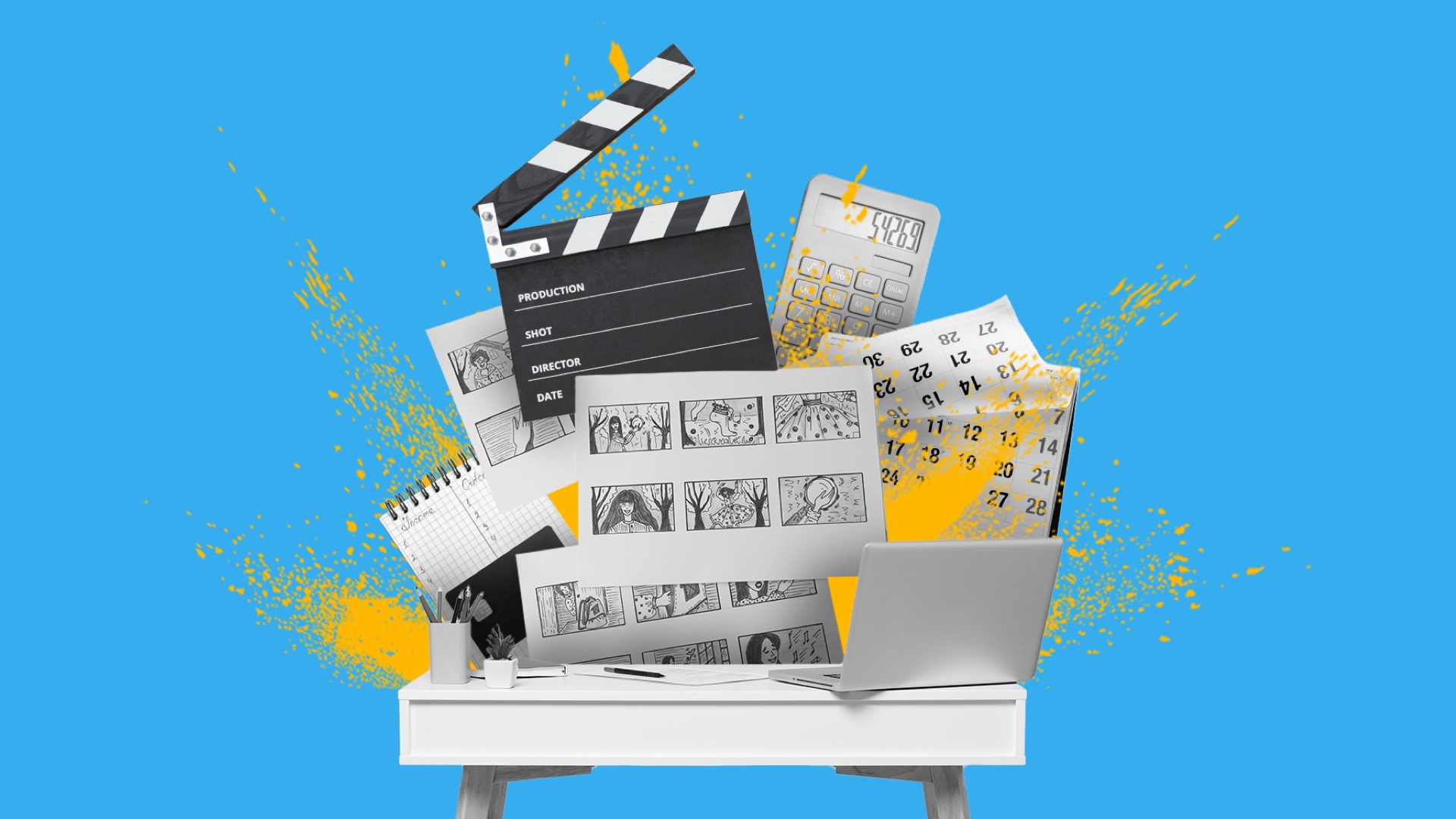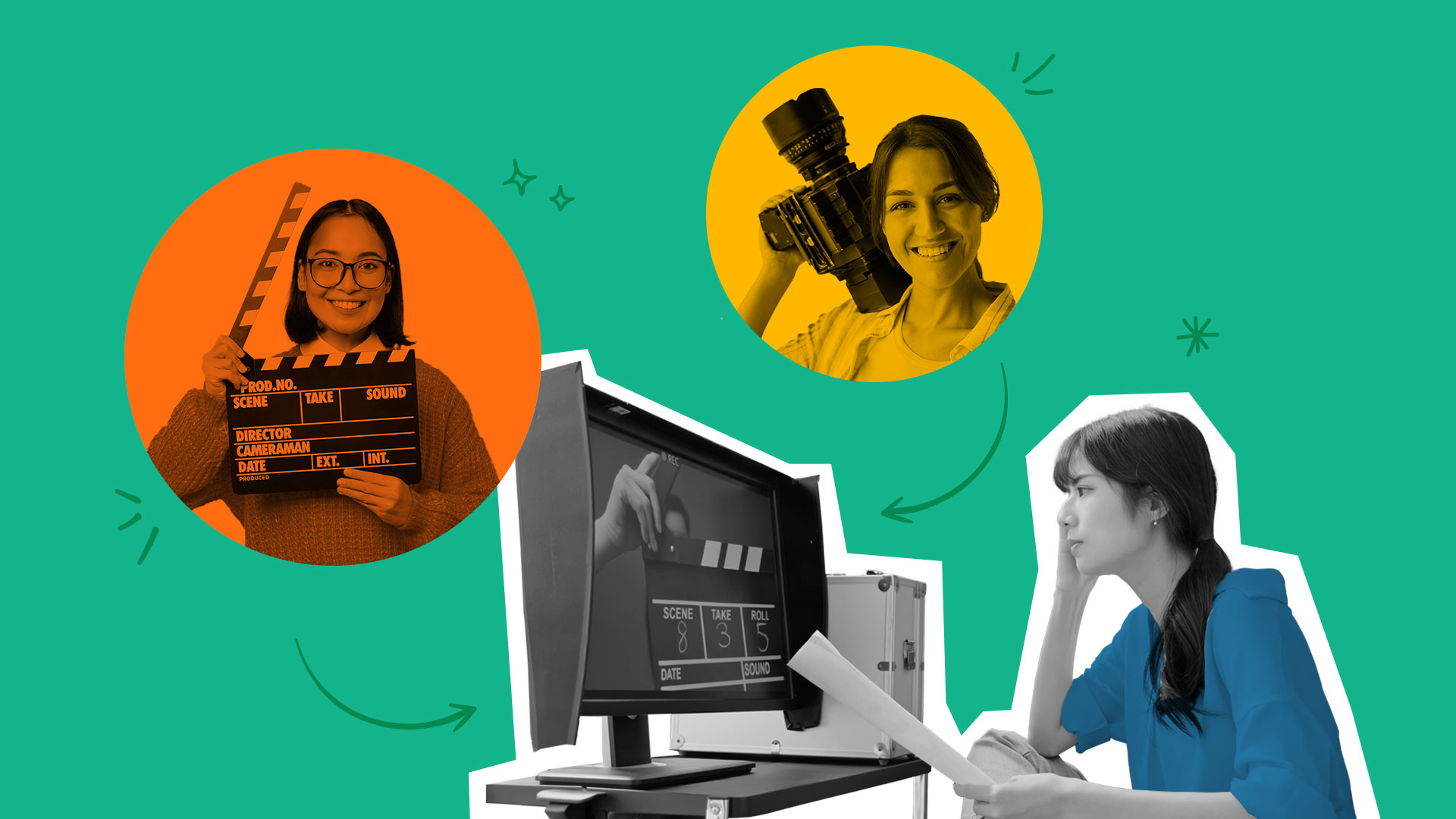Video Pre Production Checklist: 10 Tips for Success

Pre-production may not have the stressful excitement of a shoot or the getting-to-the-finish-line magic of post-production, but it’s a crucial part of any shoot, not least of all because so many problems can get solved in advance and future headaches are avoided.
In order to make pre-production a success — which will then set the rest of the process up for success, too — it helps to take a methodical approach. Pre-production planning is a whole lot easier when you have a handy video pre-production checklist.
Pre Production Definition
What is pre-production and why is it important? Video pre-production is the phase in which every logistical decision to do with creating a piece of content gets determined. That includes things such as:
- Casting and crew
- Location scouting
- Budget and schedule
What are The 5 Stages of Video Production?
In the stages of video production, pre-production comes second. As a broad outline, the five stages are:
1. Planning
During the video production planning stage, big picture questions are brainstormed and decided, such as the concept for the video and the general parameters of the purpose of the video, as well as its rough scope and where it fits in terms of a company’s media strategy.
2. Pre Production
This involves a more granular approach.
How long will the shoot be? What’s the location? What will the budget allow in terms of talent, number of shoot days, crew members, music rights — and so on. There are literally hundreds of questions that can be addressed during pre-production, all with a view of making the shoot and editing process as smooth as possible. Plans can be refined here if an initial concept is deemed to be unworkable. Tools such as storyboards and shot lists can be helpful here to refine video ideas and test them in advance.
3. Production
Video production is the actual shoot. It could range in scope from one actor in one location using natural light and filming on their phone — to a massive battle sequence. Either way, this is where footage is captured, and planning meets the real world.
4. Post-production
Post-production involves editing, visual effects work, sound design and scoring, color correction, and audio mixing — everything that adds up to a polished final product.
5. Marketing and Distribution
In this stage, your video finds its way out into the world and connects with an audience. If it doesn’t land as desired initially, it can be further tweaked and refined, or distribution plans changed, in order to make the impact you’re hoping for.
Need video specs for Social platforms? Social Media Video Ad Specs & Placements Guide
How Long Does Pre-Production Last?
It depends on the scope of the project. For a movie, pre-production can take 3 to 7 months, depending on the complexity of the shoot, effects, etc. For a short video or commercial, pre-production usually lasts up to two weeks. But a few days are not uncommon for a short video.
Even then, different teams’ involvement can be staggered so that the camera crew, for example, is only involved for a short half-day scout, while other departments like artwork for a week if a set needs to be built.
Video Pre-Production Checklist
1. Define Your Goals & Distribution Channels
What do you want this video to do or say? Is it to reinforce your brand story or testify to a particular product’s usefulness? Is it tied to a specific date or holiday? Is it going to look highly polished and effects-heavy, or is it more authentic-seeming user-generated content (UGC) or UGC-style content?
Similarly, its style will differ depending on its distribution channel. Is it going to live on TikTok, Facebook, Instagram, or somewhere else? Each platform has its own style and audience.
2. Identify Your Audience
Who are you trying to reach? Is your audience younger or older, differentiated by gender or some other demographic quality? Is it a broad, four-quadrant (old, young, male, female) audience you’re trying to reach, or are you targeting a specific niche? Is your product aimed at solving issues faced by a specific group, eg, haircare products for Black women?
3. Develop Your Message
Now that you know whom your spot is aimed at, decide how to best reach them. Is your message:
- That you offer a unique solution?
- That you have testimonials showing how your product or service works?
- That your brand is trustworthy, and do you want to create a general goodwill-building spot?
Or is it something else?
4. Establish a Budget
Rather than just going wild with an idea and then having to scale it back because it’s not practically achievable, it makes more sense to start with a firm budget and work with that. Understanding the video production costs front will save a lot of time and later disappointment. It may also provoke some good ideas when you know your constraints.
5. Select the Type of Video
Once you know all the above, it should be easy to decide what type of video addresses those needs. Is it:
- UGC-style content?
- An animated explainer video?
- A mini-doc that goes behind the scenes of your brand or its manufacturing processes?
Do you want to be able to produce a few videos from one shoot?
6. Storyboard Your Concept
A storyboard is a comic-book version of your project. It shows shot by shot how the camera will move, how the shoot will be blocked (meaning staged), and where graphics and titles will be interspersed. It’s a great reference tool that allows every crew member to see what needs to be done.
7. Write Your Script
Along with your storyboard, the script is a blueprint for the shoot, comprising:
- Overall concept
- Cast descriptions
- Dialogue
8. Location & Equipment Selection
The location has important creative but also logistical ramifications for your shoot. Some questions:
- Is it easily accessible?
- Simple to set up in?
- Does it provide adequate natural light?
- Will it involve audio issues like passing heavy traffic?
- Are permits required?
Equipment selection, too, will affect the look and feel of your shoot.
- Within your budget, what’s the camera that will give you the best quality footage?
- Do you need one that’s extra nimble or has specific niche uses like a GoPro, or can you just use a phone or prosumer model?
- Is sound particularly complicated to mic?
9. Casting & Talent Selection
Some questions to consider here may include:
- Do you want professional or natural talent?
- Is there room for diverse casting?
- Does your cast need specific talent like singing or dancing, which could involve a longer audition process?
10. Create a Schedule
Your budget and the complexity of your shoot will dictate a schedule. Longer is more expensive, of course.
- Can you reasonably get all your shots in one day?
- Do you need to include travel time to get to multiple locations?
- Do you have specific needs like night shooting?
You can schedule by the hour so you know you’re on track. Some even by the quarter-hour if you really want to stay on top of things.
How QuickFrame Streamlines Pre-Production Workflow
QuickFrame deals with a high volume of production and knows the process thoroughly, so it’s able to deal with variables that less experienced producers may not be familiar with.
By drawing on its global video hub, it efficiently draws on experienced producers all around the world to optimize workflow and remove time-draining tasks from your plate so you can focus more on big picture things that matter and less on minutiae.
Need help making videos? See how our video production platform can help your business.
Video Pre-Production Planning: Final Thoughts
QuickFrame and its Maker Community can nimbly integrate your in-house resources with their powerful global network, and so deliver high-performing video marketing deliverables built for every channel, audience, and objective, at scale.
QuickFrame’s data-driven insights can help transform your work. In pre-production, you can work directly with a maker in their collective via their platform in order to quickly and efficiently finalize your production plan.
You can certainly work through your checklist on your own, but working with QuickFrame could save you time and money, setting you up for greater success. Get in touch today and see how they can transform your work!
Do More with Video
Learn how we can help you produce more quality videos affordably and at scale.


